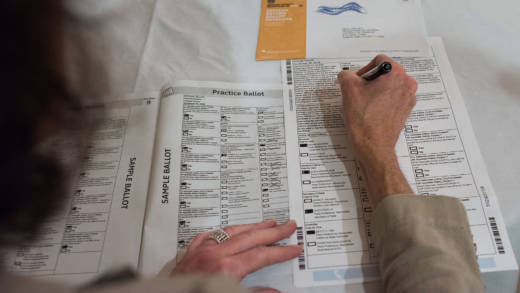San Francisco and Oakland were some of the first cities in the country to adopt ranked choice voting. It’s now a popular election reform that is being adopted across the country. Advocates say allowing voters to rank candidates in order of preference on their ballots – instead of just picking one – gives them more say over who ends up in office and more freedom to vote for a longshot candidate without the feeling that they are wasting their vote. But the system can be complicated and confusing for many voters and has drawn ire from those unhappy with the election results. As part of Forum’s Doing Democracy series examining what democracy means and how it is practiced, we’ll talk about how experiments in ranked choice voting have changed our elections, voting behaviors and the candidates we bring into office.
Doing Democracy: How Ranked-Choice Voting Has Changed Elections

Voter Becky Visconti completes her mail-in ballot at a Ballot Party at a private residence in Laguna Niguel, in Orange County California, October 24, 2018. (Robyn Beck/AFP/Getty Images)
Guests:
Eric Jaye, founder and president, Storefront Political Media
Miles Parks, reporter covering voting and elections, NPR's Washington Desk<br />
Aaron Tiedemann, Albany city councilmember
Lisa Bryant, chair and associate professor, Department of Political Science, California State University Fresno
Sponsored